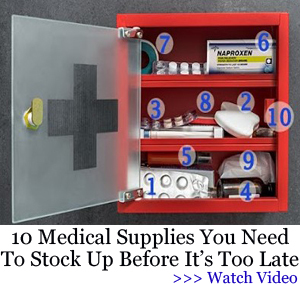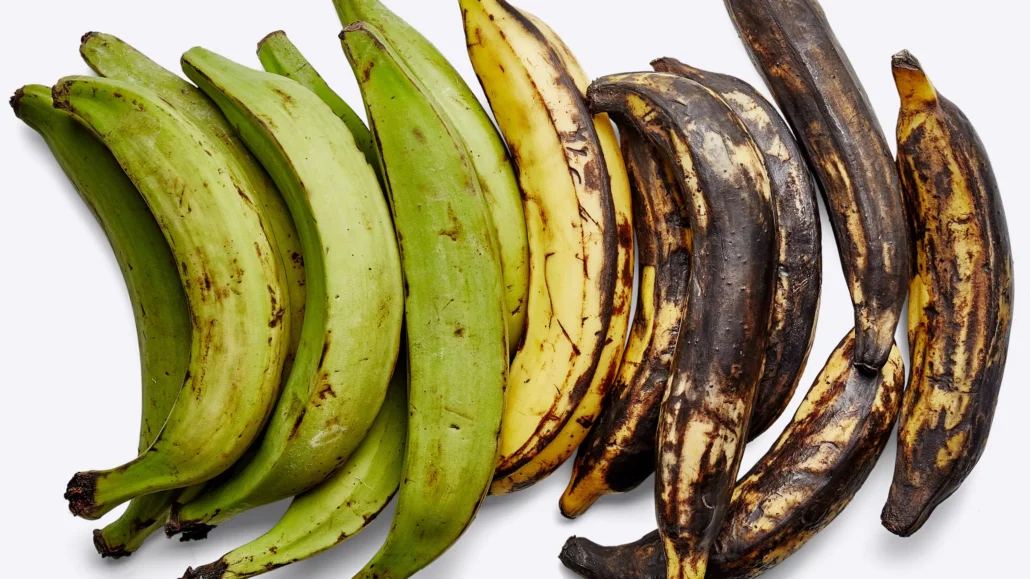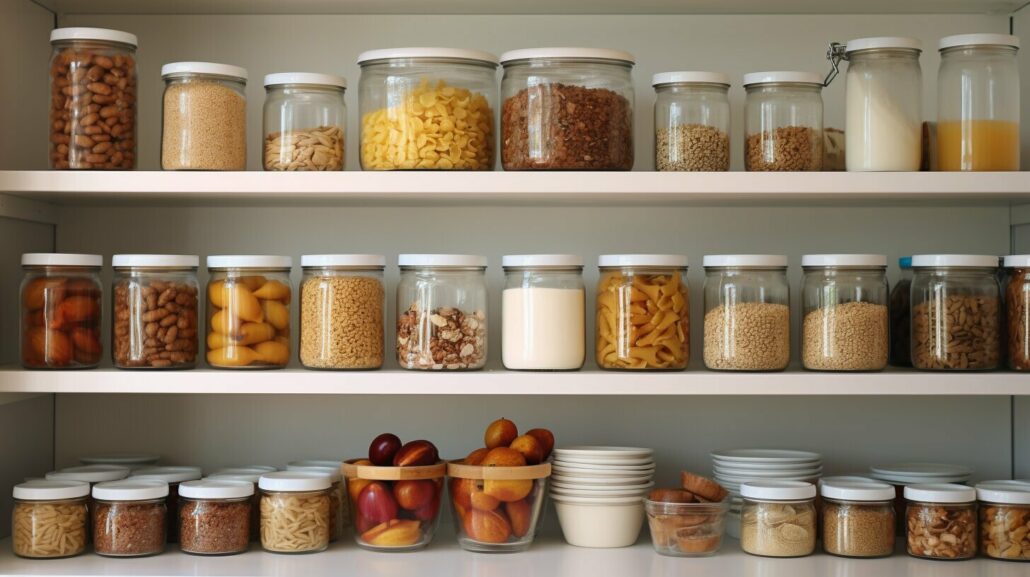Embarking on your prepping journey? Not sure about prepping where to start? We’ve got your back! Prepping is more than a hobby – it’s a lifestyle. As a beginner, building a solid foundation is crucial to ensure you are well-prepared for any situation. In this essential guide, we’ll walk you through the prepping basics and provide you with valuable tips to get started.
Key Takeaways
- Stock up on essential supplies such as water reserves, emergency food, first aid kits, hygiene products, and sanitation supplies.
- Ensure you have at least two weeks’ worth of emergency food stored and explore options for storing water, including rainwater collection.
- Gaining basic first aid skills and CPR training is important for handling medical emergencies effectively.
- Don’t overlook hygiene and sanitation – proper products and practices are essential to maintain health during crises.
- Find storage solutions for your prepping supplies, especially in small spaces, to maximize organization and accessibility.
Prepping Where To Start: Building a Foundation
When starting your prepping journey, it’s crucial to build a strong foundation by stocking up on essential supplies that will help you navigate through emergencies and crises. These supplies are the backbone of your prepping efforts, providing you with the necessary tools to sustain yourself and your loved ones during challenging times.
One of the first items you should consider is water reserves. Water is an absolute necessity for survival, and it’s important to have an adequate supply on hand. Collecting rainwater is a great way to store water in rainwater barrels, ensuring that you have a reliable source of clean water in case of emergencies.
| Essential Prepping Supplies |
|---|
| Water reserves |
| Emergency food |
| First aid kits |
| Hygiene products |
| Sanitation supplies |
Another crucial aspect of prepping is having a sufficient stock of emergency food. It’s recommended to have at least two weeks’ worth of food stored, ensuring that you and your family have enough sustenance during an extended crisis. Consider collecting commercially packaged foods that have a long shelf life, as well as home-preserved options like canning. A mix of food options provides variety and nutritional balance in your emergency food supplies.
First aid supplies are also essential to include in your prepping arsenal. Acquiring basic first aid skills through training, such as CPR, is highly recommended. Additionally, having a well-stocked first aid kit with essentials like bandages, antiseptics, and medications will enable you to handle medical emergencies effectively.
Creating Storage Solutions for Prepping Supplies
Storing your prepping supplies can be a challenge, especially if you have limited space. However, with some creative thinking, you can find practical storage solutions. Utilize under the bed storage, cabinets, and bookshelves to maximize your storage capacity. By organizing your supplies efficiently, you can ensure easy access to them when needed.
As you embark on your prepping journey, remember that building a strong foundation is crucial. Stock up on essential supplies like water reserves, emergency food, first aid kits, hygiene products, and sanitation supplies. Develop a plan that addresses your specific needs and circumstances. By doing so, you’ll be well-prepared to face emergencies and crises with confidence and resilience.
Stocking Up on Emergency Food and Water
One of the fundamental aspects of prepping is ensuring you have an ample supply of emergency food and water to sustain yourself and your loved ones during challenging times. When an emergency strikes, access to food and clean water may become limited, making it crucial to have provisions in place.
When it comes to emergency food, it is recommended to have at least two weeks’ worth of supplies. This includes non-perishable items that have a long shelf life, such as canned goods, dried fruits, nuts, and granola bars. It’s also important to consider any dietary restrictions or special needs of the people you are prepping for, such as allergies or specific health conditions.
Water is equally essential, and it’s important to have a reliable source. While tap water is usually safe to drink, during emergencies, it may become contaminated or unavailable. Collecting rainwater is a sustainable option to store water using rainwater barrels. Additionally, you can consider purchasing bottled water or installing a water filtration system to ensure a constant supply of clean drinking water.
| Emergency Food | Water |
|---|---|
| Canned goods
| Collect rainwater in barrels |
| Dried fruits and nuts | Purchase bottled water |
| Granola bars | Install a water filtration system |
By having a well-stocked supply of emergency food and water, you can ensure that you and your loved ones are prepared to meet your basic needs during times of crisis. Remember to regularly rotate your food and water supplies to maintain freshness and effectiveness. Being prepared with these essentials will give you peace of mind and enable you to focus on other aspects of prepping.
First Aid and Emergency Medical Supplies
When preparing for emergencies, having the right first aid and emergency medical supplies can make a significant difference in ensuring the health and well-being of you and your family. It’s essential to be prepared for various medical situations that may arise during a crisis. Here are some key items to include in your first aid kit:
- Bandages and dressings: Stock up on adhesive bandages, gauze pads, adhesive tape, and elastic bandages. These are essential for treating wounds and stopping bleeding.
- Antiseptic solutions: Include antiseptic wipes, hydrogen peroxide, and rubbing alcohol to clean and disinfect wounds or surfaces.
- Medications: Have a supply of over-the-counter pain relievers, fever reducers, antihistamines, and any prescription medications you or your family members may need.
- Tools and instruments: Keep a thermometer, tweezers, scissors, and disposable gloves in your kit. These tools will come in handy for various medical procedures or tasks.
“Having the right first aid supplies is essential for handling medical emergencies effectively. Be sure to regularly check and restock your first aid kit, ensuring that all supplies are within their expiration dates.”
Basic First Aid and CPR Training
Acquiring basic first aid skills and CPR training is highly recommended for every prepper. Knowing how to assess and treat common injuries or medical conditions can potentially save lives. Consider enrolling in a local first aid course or taking online training programs. These courses will equip you with the knowledge and confidence to respond effectively in emergency situations.
Don’t Overlook Hygiene and Sanitation
In times of crisis, maintaining proper hygiene and sanitation is crucial for preventing the spread of diseases. Make sure to include hygiene products such as soap, hand sanitizers, toilet paper, menstrual supplies, and diapers in your emergency supplies. Additionally, stock up on sanitation supplies like garbage bags, disinfectant wipes, and bleach for cleaning surfaces and maintaining cleanliness.
Conclusion:
By prioritizing first aid and emergency medical supplies, you are taking a proactive step towards safeguarding the health of yourself and your loved ones during emergencies. Ensure your first aid kit is well-stocked, and consider updating your knowledge through basic first aid and CPR training. Additionally, don’t forget to include hygiene and sanitation products in your emergency supplies to prevent the spread of illness. Being prepared in these areas will give you peace of mind knowing that you can handle medical situations effectively and ensure the well-being of your family.
| Essential First Aid Supplies | Basic First Aid and CPR Training | Hygiene and Sanitation Products |
|---|---|---|
| Bandages, dressings | Local first aid course | Soap, hand sanitizers |
| Antiseptic solutions | Online training programs | Toilet paper, menstrual supplies |
| Medications | Garbage bags, disinfectant wipes | |
| Tools and instruments | Bleach |
Hygiene and Sanitation During Crises
In times of crisis, maintaining proper hygiene and sanitation practices becomes even more critical to prevent the spread of diseases and ensure overall well-being. As we navigate through emergencies, it is essential to prioritize our hygiene and sanitation needs to protect ourselves and those around us.
One of the most important aspects of hygiene during a crisis is handwashing. Regularly washing your hands with soap and water for at least 20 seconds can significantly reduce the risk of contracting or spreading illnesses. If soap and water are not available, using hand sanitizers with at least 60% alcohol content can be a suitable alternative.
Additionally, keeping your living space clean and disinfected plays a vital role in maintaining good hygiene. Disinfect frequently touched surfaces such as doorknobs, light switches, and countertops regularly. Use EPA-approved household disinfectants and follow the instructions on the product labels for effective sanitation.
“In times of crisis, maintaining proper hygiene and sanitation practices becomes even more critical to prevent the spread of diseases and ensure overall well-being.”
Don’t forget about personal hygiene products. Stock up on items such as toothpaste, toilet paper, feminine hygiene products, and diapers, if necessary. Ensure you have an adequate supply to last through the duration of the crisis. It’s always better to be prepared in advance rather than scrambling to find these essential items when they are in high demand.
Remember, during times of crisis, maintaining good hygiene and sanitation practices can go a long way in safeguarding your health and the well-being of your loved ones. By following these guidelines and staying prepared, we can navigate through emergencies with confidence and resilience.
| Key Points: |
|---|
| Regular handwashing with soap and water for at least 20 seconds is crucial during a crisis. |
| Disinfect frequently touched surfaces using EPA-approved household disinfectants. |
| Stock up on personal hygiene products to ensure you have an adequate supply. |
| Maintaining good hygiene and sanitation practices is essential for overall well-being. |
Storage Solutions for Prepping Supplies
Finding efficient storage solutions for your prepping supplies is essential, especially when space is limited. As we embark on our prepping journey, it’s crucial to organize our essentials in a way that maximizes storage capacity and ensures easy access to our supplies.
One effective storage option is utilizing under the bed storage. This often-overlooked space can provide ample room for storing items like extra blankets, non-perishable food, and first aid kits. Invest in low-profile containers that fit neatly under the bed, keeping your supplies conveniently out of sight, yet readily accessible when needed.
Cabinets and bookshelves are also great storage solutions for prepping supplies. Install sturdy shelving units in your pantry or basement, allowing you to store items in an organized manner. Use clear storage bins or labeled containers to separate and categorize different supplies, making it easy to find what you need during an emergency.
| Storage Option | Benefits |
|---|---|
| Under Bed Storage | Maximizes space, convenient access |
| Cabinets | Organized storage |
| Bookshelves | Visible and easily accessible supplies |
Remember to make use of vertical space as well. Install shelves high up on the walls to store items that are not needed on a regular basis. This will free up precious floor and counter space for other essential supplies.
By implementing these storage solutions, you can optimize your prepping supplies and ensure that everything is kept neat, organized, and easy to locate. This will not only save space but also save you valuable time during emergencies when quick access to your prepping essentials is crucial.
Developing a Prepping Plan
A solid prepping plan is crucial to ensure you are adequately prepared for various emergencies and can sustain yourself and your family in times of need. Whether you’re new to prepping or have been practicing it for some time, having a well-thought-out plan will make a significant difference in your level of preparedness. Here are some beginner prepping tips to help you develop an effective prepping plan:
Create a Checklist
Begin by creating a checklist of essential items and supplies you will need during an emergency. This includes food, water, first aid supplies, hygiene products, and sanitation supplies. Having a checklist will help you stay organized and ensure you don’t overlook any crucial items.
Assess Your Needs
Consider the number of people you’re prepping for and the duration of the emergency you’re preparing for. This will give you an idea of how much food and water you need to store. The general recommendation is to have at least two weeks’ worth of emergency food and an adequate supply of water.
Storage Solutions
When space is limited, finding suitable storage solutions becomes essential. Look for creative ways to maximize your storage capacity, such as utilizing under the bed storage, cabinets, or bookshelves. Consider investing in storage containers and organizing your supplies so that they are easily accessible in times of need.
Mix of Food Options
Remember to include a mix of food options in your prepping plan to provide variety and ensure nutritional balance. Consider collecting commercially packaged foods that have a long shelf life, as well as home-preserved options like canning. This will give you more flexibility in your meal options.
| Key points to remember: |
|---|
| A solid prepping plan is crucial for preparedness. |
| Create a checklist to stay organized. |
| Assess your needs based on the number of people and duration of the emergency. |
| Optimize storage solutions in small spaces. |
| Include a mix of food options for variety and nutritional balance. |
The Mix of Food Options for Prepping
When it comes to prepping food supplies, it’s essential to have a mix of options to ensure a well-rounded and nutritious diet during emergencies. The key is to have a combination of commercially packaged foods and home-preserved options like canning. This approach not only provides variety but also offers flexibility and nutritional balance.
Commercially packaged foods are convenient and have a long shelf life. They are often specifically designed for emergency situations, providing essential nutrients and calories. You can stock up on canned fruits and vegetables, freeze-dried meals, protein bars, and other non-perishable items. These foods are ready to eat and require minimal preparation, making them ideal for when you need quick and convenient sustenance.
On the other hand, home preservation through canning allows you to store fresh produce at the peak of its nutritional value. Canned fruits and vegetables retain many of their vitamins and minerals, ensuring you have access to essential nutrients during an emergency. Additionally, canning allows you to control the ingredients and avoid preservatives or additives that may be present in commercially packaged foods. It’s important to properly seal and store canned goods to maintain their quality and prevent spoilage.
| Commercially Packaged Foods | Home Preservation through Canning |
|---|---|
| Convenient and long shelf life | Fresh produce at peak nutritional value |
| Specifically designed for emergencies | Retains vitamins and minerals |
| Ready to eat with minimal preparation | Control over ingredients |
By combining commercially packaged foods with home-preserved options, you can ensure that your emergency food supplies are both practical and nutritious. This mix of food options provides a well-rounded diet, ensuring your body gets the essential nutrients it needs during challenging times. Remember to rotate your food supplies regularly to maintain freshness and quality. Empower yourself with the knowledge and skills to preserve your own food, while also taking advantage of the convenience offered by commercially packaged options. With this approach, you can build a robust food storage plan that will sustain you and your loved ones during emergencies.
Don’t forget to check out our Survival Bootcamp where we discuss this topic in great detail.
Conclusion: Your Prepping Journey Begins Here
Congratulations on taking the first step in your prepping journey! With the essential knowledge and tips provided in this guide, you are now equipped to start prepping with confidence.
Prepping is more than just a hobby; it’s a lifestyle. As a beginner, it’s important to build a solid foundation for your prepping efforts. Start by stocking up on everyday essentials such as water reserves, emergency food, first aid kits, hygiene products, and sanitation supplies.
When it comes to emergency food, it’s recommended to have at least two weeks’ worth of supplies. Water is just as crucial, and a practical way to store it is by collecting rainwater in rainwater barrels. Remember to also invest in first aid supplies and gain basic first aid and CPR training to handle medical emergencies effectively.
Don’t overlook the importance of hygiene and sanitation during crises. Having proper hygiene products and sanitation supplies can prevent health issues and maintain cleanliness in challenging situations. Be resourceful and find storage solutions for your supplies, especially if you have limited space. Utilize under the bed storage, cabinets, and bookshelves to maximize your storage capacity.
Developing a prepping plan is essential. Consider the number of people you’re prepping for and for how long, and assess your food and water needs accordingly. You have options for food storage, such as collecting commercially packaged foods or home preserving through canning. Remember, the best approach is a mix of food options, ensuring variety and nutritional balance in your emergency food supplies.
Now that you have a basic understanding of prepping and the necessary supplies, it’s time to take action. Start gathering the items you need and create a prepping plan that suits your needs. Remember, prepping is a journey, and by taking these steps, you’re already on your way. Best of luck!
FAQ
Q: What are the essential supplies needed to start prepping?
A: To start prepping, you need to stock up on everyday essentials such as water reserves, emergency food, first aid kits, hygiene products, and sanitation supplies.
Q: How much emergency food should I store?
A: It is recommended to have at least two weeks’ worth of emergency food stored.
Q: How can I store water for emergencies?
A: Collecting rainwater is a great way to store water using rainwater barrels.
Q: Do I need first aid training?
A: It is recommended to gain the necessary skills through basic first aid and CPR training.
Q: What hygiene and sanitation products should I have?
A: Hygiene and sanitation products play a key role in preventing health issues during a crisis. Stock up on items such as toiletries, cleaning supplies, and personal protective equipment.
Q: How can I store prepping supplies in small spaces?
A: Utilize under the bed storage, cabinets, and bookshelves to maximize storage capacity for your prepping supplies.
Q: How do I develop a prepping plan?
A: Assess your food and water needs based on the number of people you’re prepping for and for how long. Consider different food storage options, such as commercially packaged foods and home preservation methods like canning.
Q: What should I consider when choosing food options for prepping?
A: It is important to have a mix of food options for prepping. Consider commercially packaged foods and home-preserved options like canning to ensure variety and nutritional balance in your emergency food supplies.









